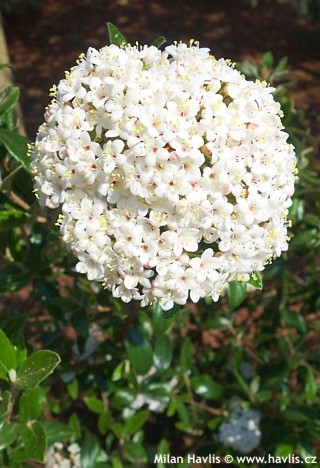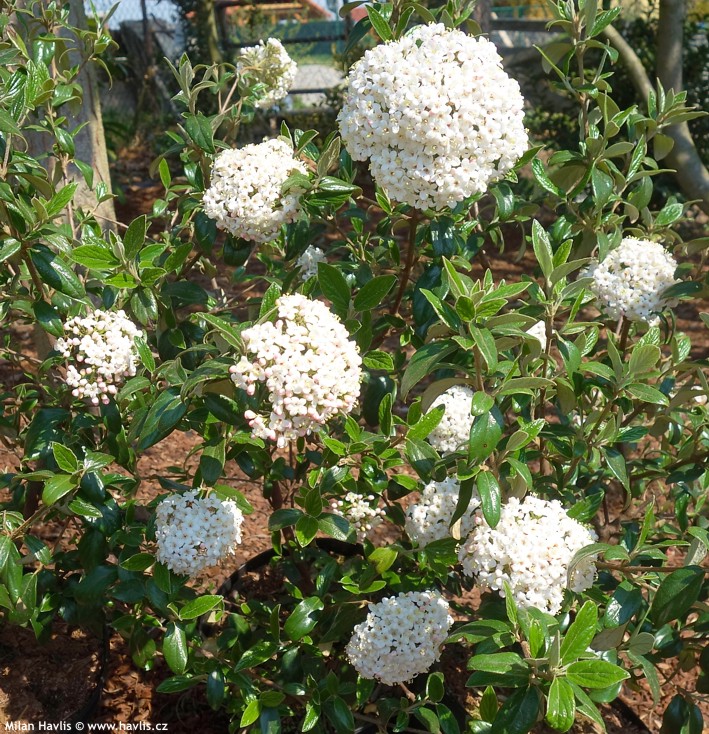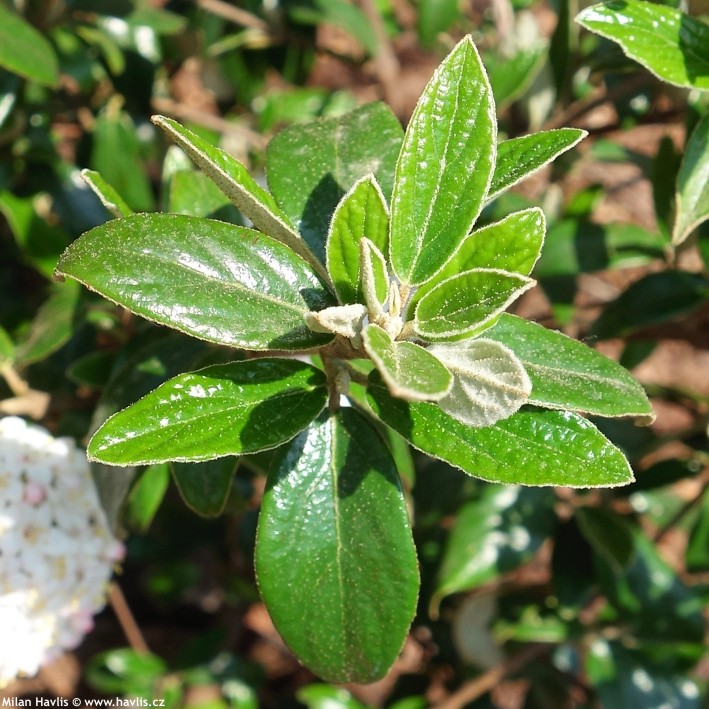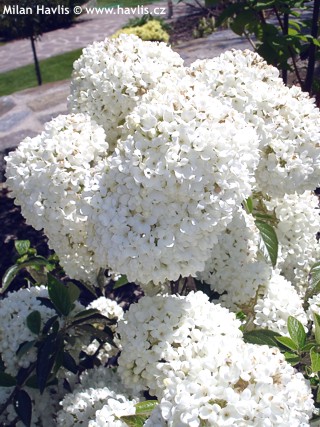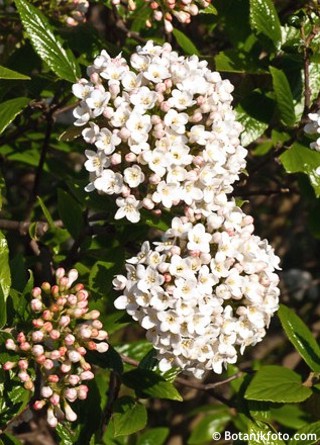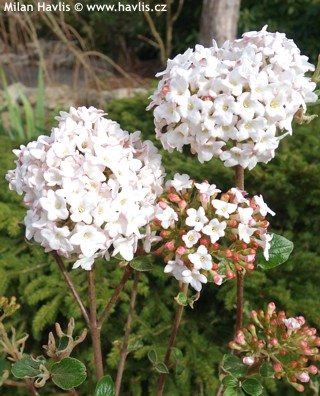Viburnum x burkwoodii 'CONOY' Burkwood viburnum, arrowwood
size/type
medium-sized shrub,medium-sized shrub
usual height
1,3-1,5m
usual width
1,5-2m
leaves
evergreen broadleaf
colour of leaves
flowers
showy
colour of flowers
blooming time
April-May
location
full to partial sun
soil type
acidic (peaty) to neutral
soil moisture requirements
evenly moist (dislikes drought)
USDA zone (lowest)
5 (down to -29°C)
winter protection
for zone 5+6

for zone 7

categorized
Viburnum
Burkwood viburnum is a garden hybrid between v.carlesii and v.utile made in England in 1924. It belongs to the most fragrant viburnums whose flowers people can smell from a distance of 7 or even 8 meters. However, this variety is one the very few which lack any fragrance at all, making it suitable for those who resent strong viburnum perfume.Description of the plant:
Conoy is a Burkwood viburnum hybrid bred by Donald Egolf from US National Arboretum in Washington, D.C., and introduced in 1988. It is a non-fragrant cross between Park Farm Hybrid variety and v.utile. In early spring, usually in late April, depending on weather conditions, appear small, tubular, snow white flowers with salmon pink stigma in the centre, composed in spherical umbels 6-8 cm across. Buds are pale pink. They are followed by small, red, inedible fruit which mature to almost black some six to eight weeks later. Evergreen leaves are leathery, dark green above, beige-grey on reverse, narrowly ovate to oblong, 8-10 cm long, and highly glossy. They are more reliably evergreen during mild winters in zones 6 and higher, and semi-evergreen or deciduous in harsh winters of colder regions. In autumn some older leaves turn red in fully insolated locations. Conoy viburnum forms compact, quite handsome and bushy shrubs with flat tops, about 1.5m tall and almost 2m wide.
Pruning is not needed to improve branching, but can be done to make a prettier shape or to keep it smaller. Prune it just after the blooming has finished before the leaves unfold completely. Viburnums are not specific about soil needs. This one can even tolerate compacted ground and city pollution. The soil should be reasonably fertile and kept evenly moist for a few months after planting, though it can take long periods of drought once established. Grow it in full sun or partial shade. Hardy to min. -29°C (USDA zone 5), possibly a bit more.
Last update 26-12-2018
QUICK PRICE OVERVIEW
CURRENTLY SOLD OUT
WANT TO TRY A SIMILAR PLANT?












